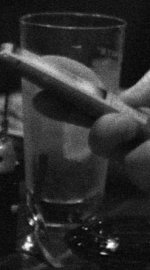venchka
Veteran
I just relaized that we are East Texas neighbors! Howdy! We need to get all the East Texas RF, MF & LF folks together sometime. You and I subscribe to all of the bad habits it seems. I also have too much 35mm SLR gear.
I wish I knew what all the fussing is about when it comes to using a flatbed scanner for 35mm film. Sure, in a perfect world, I suppose we should all have a scanner for each format. The world ain't perfect. State of the possible often trumps state of the art. I think you might be better off to get a decent flatbed scanner first. you will love what they do for 4x5 and MF. Get the holders from Betterscanning. Try ANR glass with your negatives. If you still really hate the output from 35mm, then get a film scanner for 35mm.
In the meantime, I'll be scanning all of my negatives on my old Epson scanner and grinning. Blissful in my ignorance.
I wish I knew what all the fussing is about when it comes to using a flatbed scanner for 35mm film. Sure, in a perfect world, I suppose we should all have a scanner for each format. The world ain't perfect. State of the possible often trumps state of the art. I think you might be better off to get a decent flatbed scanner first. you will love what they do for 4x5 and MF. Get the holders from Betterscanning. Try ANR glass with your negatives. If you still really hate the output from 35mm, then get a film scanner for 35mm.
In the meantime, I'll be scanning all of my negatives on my old Epson scanner and grinning. Blissful in my ignorance.









